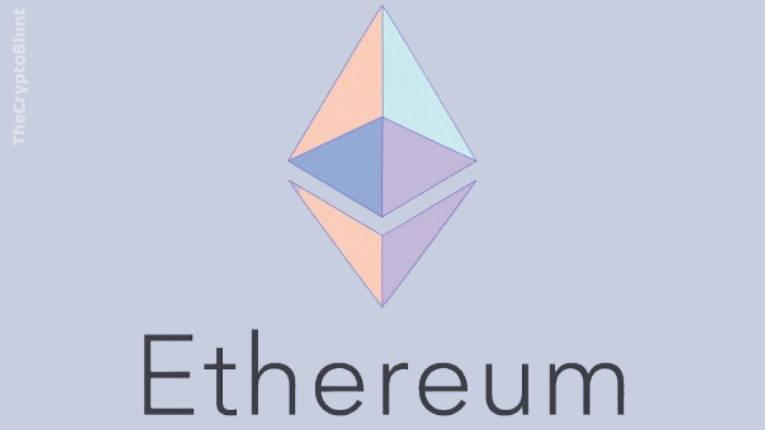The world of cryptocurrency can often feel like an intricate labyrinth, filled with unfamiliar terms and complex technologies. While Bitcoin captured the initial spotlight as “digital gold,” another revolutionary platform, Ethereum, emerged to push the boundaries of what blockchain could achieve. It’s not just a digital currency; it’s a global, open-source platform for decentralized applications, a “world computer” that has spawned an entirely new digital economy.
- The Genesis of a New Idea: What is Ethereum?
- The Genesis Story: How Ethereum Came to Be and Its Visionary Founders
- Beyond the Coin: The Expansive Use Cases of Ethereum
- Dispelling Common Misconceptions About Ethereum
- Getting Started with Ethereum (A Beginner’s Path)
- The Road Ahead: Ethereum’s Ambitious Future
If you’ve heard whispers of DeFi, NFTs, or the Metaverse and wondered how they all connect, chances are Ethereum is at the heart of it. This guide will unravel the complexities of Ethereum, explaining its fundamental concepts, exploring its fascinating history and visionary founders, diving into its diverse real-world uses, and peering into its ambitious future. By the end, you’ll not only understand what Ethereum is but also why it’s a cornerstone of the digital revolution.
The Genesis of a New Idea: What is Ethereum?
At its core, Ethereum is a decentralized, open-source blockchain platform that enables the creation and execution of smart contracts and decentralized applications (dApps). Unlike Bitcoin, which was primarily designed as a peer-to-peer electronic cash system, Ethereum was conceived with a much broader vision: to be a programmable blockchain. Think of it less as a digital currency (though it has one) and more as an operating system for a new kind of internet.
Let’s break down some key terms to truly grasp what Ethereum is:
- Decentralization: In a traditional system, a central authority (like a bank, a government, or a single company’s server) controls data and operations. Decentralization means there is no single point of control. Ethereum is run by a vast network of independent computers (nodes) worldwide. This distributed nature makes it incredibly resilient to censorship, manipulation, and single points of failure. No one entity can shut it down or control its rules.
- Blockchain: Imagine a continuously growing list of records, called “blocks,” which are linked together using cryptography. Each block contains a timestamp and transactional data. Once a block is added to the chain, it’s incredibly difficult to alter, making the blockchain a transparent, immutable, and secure ledger. Ethereum’s blockchain is the foundation upon which all its applications and transactions are built.
- Smart Contracts: This is where Ethereum truly distinguishes itself. Coined by cryptographer Nick Szabo in the 1990s, a smart contract is a self-executing contract with the terms of the agreement directly written into lines of code. Think of it like a vending machine: you put in money, select a drink, and if conditions are met (enough money, item available), the machine automatically dispenses your drink. No need for a human intermediary. On Ethereum, these contracts automatically execute predefined actions when specific conditions are met, without the need for a trusted third party.This automation is what unlocks a vast array of possibilities beyond simple currency transfers.
- Ether (ETH): While “Ethereum” refers to the platform, Ether (ETH) is its native cryptocurrency. ETH serves several purposes:
- Gas: It’s the “fuel” for the Ethereum network. Every operation on the network, from sending ETH to executing a smart contract, requires a small fee called “gas.” This gas is paid in ETH to the network validators (formerly miners) who process and secure these transactions. This mechanism prevents network spam and incentivizes validators.
- Store of Value/Investment: Like Bitcoin, ETH can be held as a digital asset, bought, sold, and traded on exchanges.
- Collateral: In decentralized finance (DeFi), ETH is often used as collateral for loans or other financial instruments.
- Ethereum Virtual Machine (EVM): This is the runtime environment for smart contracts on Ethereum. It’s like a global computer that allows any smart contract written in a compatible language (most commonly Solidity) to be executed across the entire network. Every node on the network runs the EVM, ensuring that all participants agree on the state of the blockchain and the execution of contracts.
In essence, if Bitcoin is a digital ledger for money, Ethereum is a digital ledger for anything programmable, paving the way for a decentralized internet.
The Genesis Story: How Ethereum Came to Be and Its Visionary Founders
The story of Ethereum begins not with a corporate giant or a government initiative, but with a bright young programmer with a bold vision.
The Seed of an Idea (2013)
The concept of Ethereum was first introduced in late 2013 by Vitalik Buterin, a Russian-Canadian programmer who was heavily involved in the Bitcoin community and a co-founder of Bitcoin Magazine. While fascinated by Bitcoin’s potential, Buterin felt its scripting language was too limited. He envisioned a more generalized blockchain platform that could run any kind of decentralized application, not just monetary transactions.
Buterin’s initial white paper, “Ethereum: A Next-Generation Smart Contract and Decentralized Application Platform,” outlined a new blockchain with a built-in Turing-complete programming language, meaning it could perform any computational task that a universal computer could. This was a radical departure from Bitcoin’s more restricted script.
The Founding Team and Early Development (2014)
Buterin’s idea quickly attracted attention. In early 2014, several individuals joined him, forming the core founding team of Ethereum. While Buterin is often credited as the primary visionary, the project benefited from the diverse expertise of:
- Gavin Wood: A British programmer, Wood wrote the Ethereum Yellow Paper, a technical specification of the Ethereum Virtual Machine (EVM), and was instrumental in developing Solidity, Ethereum’s primary smart contract programming language. He later co-founded Polkadot.
- Charles Hoskinson: An American entrepreneur, Hoskinson played a significant role in establishing the Ethereum Foundation. He later co-founded Cardano.
- Anthony Di Iorio: A Canadian entrepreneur and early Bitcoin advocate, Di Iorio provided crucial early funding and support.
- Joseph Lubin: An American entrepreneur, Lubin later founded ConsenSys, a prominent blockchain software technology company focused on building infrastructure and tools for the Ethereum ecosystem.
- Mihai Alisie: Co-founder of Bitcoin Magazine with Buterin, he also played a key role in the early development.
- Amir Chetrit & Jeffrey Wilcke: Also early contributors to the project.
It’s noteworthy that the initial founding group had differing opinions on the project’s direction (whether it should be for-profit or non-profit), leading to some departures. Ultimately, Buterin pushed for a non-profit foundation.
Development of the Ethereum software began in early 2014 through a Swiss company, Ethereum Switzerland GmbH (EthSuisse), and later solidified under the Swiss non-profit Ethereum Foundation (Stiftung Ethereum).
The Crowdsale and Launch (2014-2015)
To fund development, the Ethereum Foundation conducted an online public crowdsale (Initial Coin Offering – ICO) from July to August 2014. Participants could buy Ether (ETH) using Bitcoin. This crowdsale was highly successful, raising over $18 million in Bitcoin, which was converted to fiat to fund ongoing development.
On July 30, 2015, the Ethereum network officially went live with its “Frontier” release. This marked the birth of a new era for blockchain technology, moving beyond simple digital currency to a global, programmable platform.
The DAO Hack and The Hard Fork (2016)
A pivotal and controversial moment in Ethereum’s history occurred in 2016 with “The DAO” hack. The DAO (Decentralized Autonomous Organization) was an early, ambitious dApp built on Ethereum designed as a venture capital fund that would operate without traditional management, making decisions via smart contract rules.
In June 2016, a vulnerability in The DAO’s smart contract code was exploited, leading to the theft of approximately one-third of its funds (around $50 million worth of ETH at the time). This event sparked a major crisis within the Ethereum community, leading to a heated debate:
- Option 1: Do nothing. Uphold the immutability of the blockchain, even if it meant validating the hack.
- Option 2: “Roll back” the chain. Implement a hard fork (a permanent divergence from the previous version of the blockchain) to effectively reverse the hack and restore the stolen funds.
The community, after much deliberation, voted to proceed with a hard fork to recover the funds. This resulted in two distinct blockchains:
- Ethereum (ETH): The new chain where the hack was reversed.
- Ethereum Classic (ETC): The original, immutable chain where the hack remained.
This event highlighted the tension between the philosophical ideal of immutability and the practical need for intervention in the face of a catastrophic flaw. It shaped Ethereum’s development trajectory significantly.
Beyond the Coin: The Expansive Use Cases of Ethereum
Ethereum’s programmability, powered by smart contracts, has unlocked an astonishing array of applications beyond just being a digital currency. It’s the foundational layer for much of what we now call Web3.
- Decentralized Finance (DeFi): This is arguably the most impactful application of Ethereum. DeFi aims to recreate traditional financial services (lending, borrowing, trading, insurance) using decentralized, transparent, and permissionless protocols on the blockchain, eliminating intermediaries like banks.
- Lending & Borrowing: Platforms like Aave and Compound allow users to lend out their crypto to earn interest or borrow crypto by providing collateral, all governed by smart contracts.
- Decentralized Exchanges (DEXs): Uniswap, SushiSwap, and PancakeSwap (though the latter is on BNB Chain, conceptually similar) allow users to trade cryptocurrencies directly peer-to-peer without a centralized exchange.
- Stablecoins: Cryptocurrencies pegged to a stable asset (like the US dollar), such as DAI or USDT, which are often built on Ethereum, provide stability in the volatile crypto market.
- Yield Farming: Users lock up their crypto in DeFi protocols to earn rewards, effectively “farming” yield.
- Non-Fungible Tokens (NFTs): NFTs exploded into mainstream consciousness, and Ethereum is the dominant blockchain for them. An NFT is a unique digital asset that represents ownership of a real-world or digital item (art, music, collectibles, virtual land). Smart contracts on Ethereum define the uniqueness, ownership, and transferability of these digital tokens.
- Digital Art: Beeple’s “Everydays: The First 5000 Days” selling for $69 million put NFTs on the map.
- Collectibles: Projects like CryptoPunks and Bored Ape Yacht Club define digital scarcity and community.
- Gaming: In blockchain games like Axie Infinity or The Sandbox, in-game items, characters, and virtual land are often NFTs, allowing true digital ownership for players.
- Decentralized Applications (dApps): Smart contracts allow developers to build applications that run on the Ethereum blockchain, not on a central server. This provides inherent censorship resistance, transparency, and uptime.
- Social Media: Imagine social platforms where you own your data and content, and no central entity can censor or deplatform you (e.g., Lens Protocol).
- Gaming: As mentioned above, dApps enable play-to-earn models and true ownership of in-game assets.
- Identity Management: Self-sovereign identity solutions where individuals control their digital identity and personal data (e.g., Ethereum Name Service – ENS, providing human-readable crypto addresses).
- Supply Chain Management: Tracking goods from origin to consumer with immutable records, enhancing transparency and accountability.
- Decentralized Autonomous Organizations (DAOs): Organizations run by code and governed by token holders, allowing for collective decision-making without hierarchical management.
- Enterprise Solutions: Large companies are exploring Ethereum’s capabilities for private blockchains or enterprise-grade dApps to improve efficiency, security, and transparency in areas like:
- Supply Chain Tracking
- Inter-company Settlements
- Digital Identity Verification
- Payments and Transfers: While Bitcoin is seen as digital gold, ETH is increasingly used for direct peer-to-peer payments, especially for interacting with dApps and facilitating transactions within the Web3 ecosystem. Its robust network and liquidity make it a practical medium of exchange.
Dispelling Common Misconceptions About Ethereum
Like any disruptive technology, Ethereum has been subject to various misunderstandings. Let’s tackle some of the most common ones:
- “Ethereum is just another Bitcoin clone, or it’s ‘digital oil’ not ‘digital gold’.”
- Reality: While both use blockchain, their fundamental purposes differ. Bitcoin is primarily a decentralized store of value and a peer-to-peer electronic cash system (“digital gold”). Ethereum is a platform for programmable money and decentralized applications – a “world computer.” Its native currency, ETH, functions as the fuel (gas) for this computer, making it more akin to a commodity that powers an ecosystem rather than just a store of value. This distinction is crucial.
- “Ethereum is bad for the environment because of its energy consumption.”
- Reality: This was largely true during Ethereum’s Proof-of-Work (PoW) era. PoW, the consensus mechanism Bitcoin still uses, relies on “miners” solving complex mathematical puzzles, which consumes significant electricity. However, in September 2022, Ethereum underwent “The Merge,” a monumental upgrade that transitioned its consensus mechanism from PoW to Proof-of-Stake (PoS).
- Proof-of-Stake (PoS): Instead of miners, PoS uses “validators” who “stake” (lock up) a certain amount of ETH as collateral to propose and validate new blocks. This process is orders of magnitude more energy-efficient, reducing Ethereum’s energy consumption by over 99%. This misconception is now outdated.
- “Ethereum is completely centralized because of Vitalik Buterin and the Ethereum Foundation.”
- Reality: While Vitalik Buterin was the visionary founder and the Ethereum Foundation plays a coordinating role, the network itself is decentralized. Thousands of independent nodes run the Ethereum software globally. No single entity controls the network or can unilaterally change its rules. Decisions are made through community consensus and governance proposals (EIPs – Ethereum Improvement Proposals). While certain large stakeholders (like staking pools) exist, the network’s design encourages broad participation and resistance to single points of control.
- “All cryptocurrencies, including ETH, are used mainly for illegal activities.”
- Reality: While some bad actors may try to use any financial instrument for illicit purposes, the vast majority of cryptocurrency transactions, including those on Ethereum, are for legitimate purposes. Law enforcement agencies have also become increasingly adept at tracing blockchain transactions. The transparency of the public ledger, where every transaction is recorded, often makes it less private than traditional cash or certain offshore banking practices. Ethereum’s primary use cases, as outlined above, are about building transparent, efficient, and innovative systems for finance, gaming, digital identity, and more.
Getting Started with Ethereum (A Beginner’s Path)
For beginners, interacting with Ethereum primarily means acquiring and managing its native currency, ETH, or engaging with dApps built on the network.
- Understand the Risks: Cryptocurrency is volatile. Prices can fluctuate wildly. Never invest more than you can afford to lose. Do your own research (DYOR).
- Choose a Cryptocurrency Exchange: This is where you’ll buy and sell ETH.
- Centralized Exchanges (CEXs): Platforms like Coinbase, Binance, Kraken, or WazirX (in India) are popular choices. They act as intermediaries, allowing you to buy crypto with fiat currency (like INR, USD). They are generally user-friendly but require Know Your Customer (KYC) verification.
- Decentralized Exchanges (DEXs): Platforms like Uniswap allow you to trade crypto directly from your wallet without an intermediary. More complex for beginners.
- Set Up a Cryptocurrency Wallet: Once you buy ETH, you’ll need a place to store it. Wallets hold your private keys, which are essential for accessing and managing your crypto.
- Software Wallets (Hot Wallets): These are applications or browser extensions (e.g., MetaMask, Trust Wallet) connected to the internet. They are convenient for interacting with dApps but are considered less secure for large amounts than hardware wallets.
- Hardware Wallets (Cold Wallets): Physical devices (e.g., Ledger, Trezor) that store your private keys offline. They offer the highest level of security for significant holdings but are less convenient for frequent transactions.
- Important: Always back up your seed phrase (a series of words) securely and never share it with anyone. This is your ultimate key to your funds.
- Start Small and Learn: Begin with small amounts. Experiment with sending ETH, exploring dApps (if you’re curious about DeFi or NFTs), and understanding gas fees.
- Explore dApps (Optional): Once you have a wallet like MetaMask funded with some ETH, you can connect to various dApps. Start with reputable ones like OpenSea (for NFTs) or simple DeFi protocols to get a feel for the ecosystem.
Remember: This is not financial advice. Always consult with a financial professional for personalized guidance.
The Road Ahead: Ethereum’s Ambitious Future
Ethereum is not a static technology; it’s constantly evolving. Its roadmap, overseen by the Ethereum Foundation and driven by community proposals, is focused on making the network more scalable, secure, and sustainable. Key developments include:
- The Surge (Sharding & Rollups):
- The Merge solved Ethereum’s energy consumption problem. The Surge aims to solve its scalability issues. Currently, Ethereum can process a limited number of transactions per second, leading to high gas fees during peak usage.
- Sharding: This involves breaking the Ethereum blockchain into smaller, more manageable pieces called “shards.” Each shard would process its own transactions and smart contracts in parallel, dramatically increasing the network’s throughput.
- Rollups (Layer 2 Solutions): These are scaling solutions that process transactions off the main Ethereum blockchain (Layer 1) and then “roll them up” into a single transaction settled on Layer 1. This significantly reduces gas fees and increases transaction speed. Examples include Optimism, Arbitrum, zkSync, and StarkWare. The “Dencun” upgrade in March 2024 introduced “proto-danksharding” (EIP-4844), making rollups even cheaper and more efficient by introducing “blobs” for temporary data storage.
- The Scourge (Addressing MEV & Centralization):
- This phase focuses on mitigating the negative impacts of Maximal Extractable Value (MEV), where validators or miners can reorder, insert, or censor transactions to gain profit. It also aims to further decentralize staking, ensuring that large staking pools don’t disproportionately influence the network.
- The Verge (Verkle Trees & State Growth):
- This upgrade aims to optimize data storage and improve the efficiency of verifying the network’s state (all the account balances and smart contract data). Verkle trees are a new data structure that will make it easier for light clients (nodes that don’t need to store the entire blockchain) to participate, further enhancing decentralization.
- The Purge (Historical Data Management):
- This phase is about reducing the amount of historical data that full nodes need to store, making it easier and cheaper to run an Ethereum node. This “purging” of old data will further streamline the network.
- The Splurge (Miscellaneous Improvements):
- This is a catch-all for various other enhancements, including continued improvements to the Ethereum Virtual Machine (EVM), account abstraction (making crypto wallets more user-friendly), and advancements in cryptography.
These upgrades represent a multi-year roadmap, demonstrating Ethereum’s commitment to continuous improvement and its vision for a truly scalable, secure, and decentralized global computing platform. The Pectra upgrade, slated for early 2025, is a significant upcoming milestone, bringing features like EIP-7702 (temporary smart contract accounts for EOAs) and EIP-7251 (raising staking limits).
Conclusion: The Enduring Impact of Ethereum
Ethereum has evolved from a bold idea into a powerhouse of digital innovation, fundamentally changing our understanding of what a blockchain can be. It transitioned from a pure cryptocurrency to a foundational layer for a decentralized internet, powering everything from global financial systems to unique digital art and immersive gaming experiences.
Its journey has been marked by both triumphs and challenges, from the visionary insights of its founders to the crucial decisions made after events like The DAO hack. The transition to Proof-of-Stake has dramatically addressed its environmental footprint, paving the way for a more sustainable future.
As the Ethereum roadmap continues to unfold, with ambitious plans for scaling, security, and usability, its impact is only set to grow. For beginners stepping into this world, understanding Ethereum is not just about comprehending a digital coin; it’s about grasping a paradigm shift in how we build, interact with, and own digital assets and applications. It invites you to be part of a new era of digital ownership and collective innovation. The “world computer” is still under construction, but its potential is undeniable.














